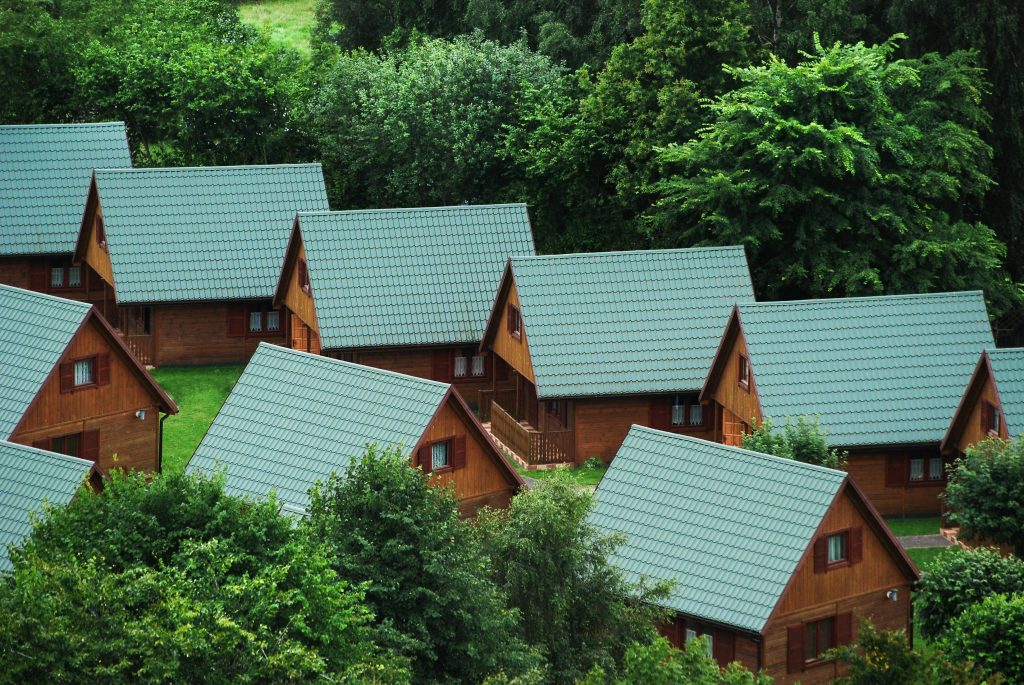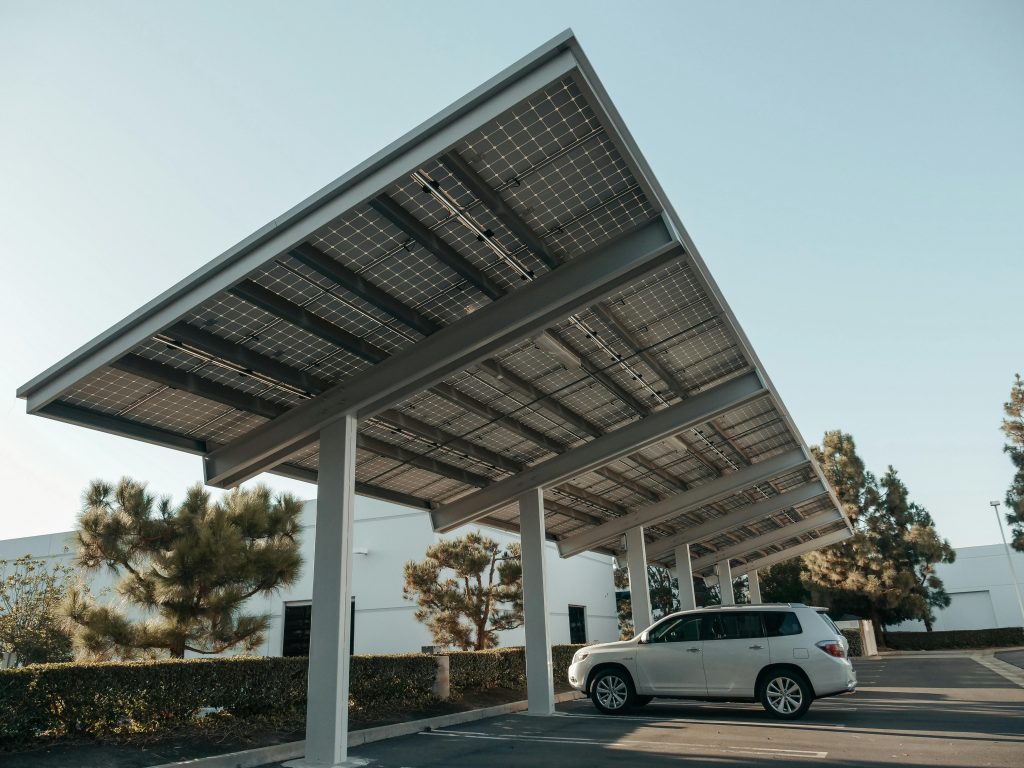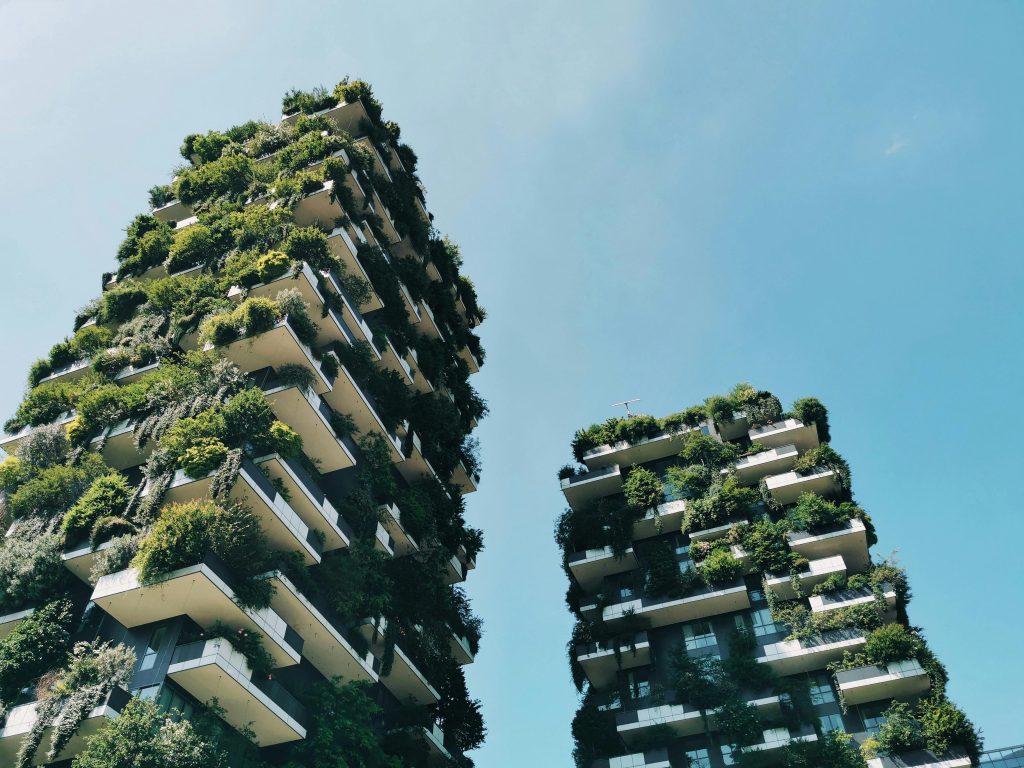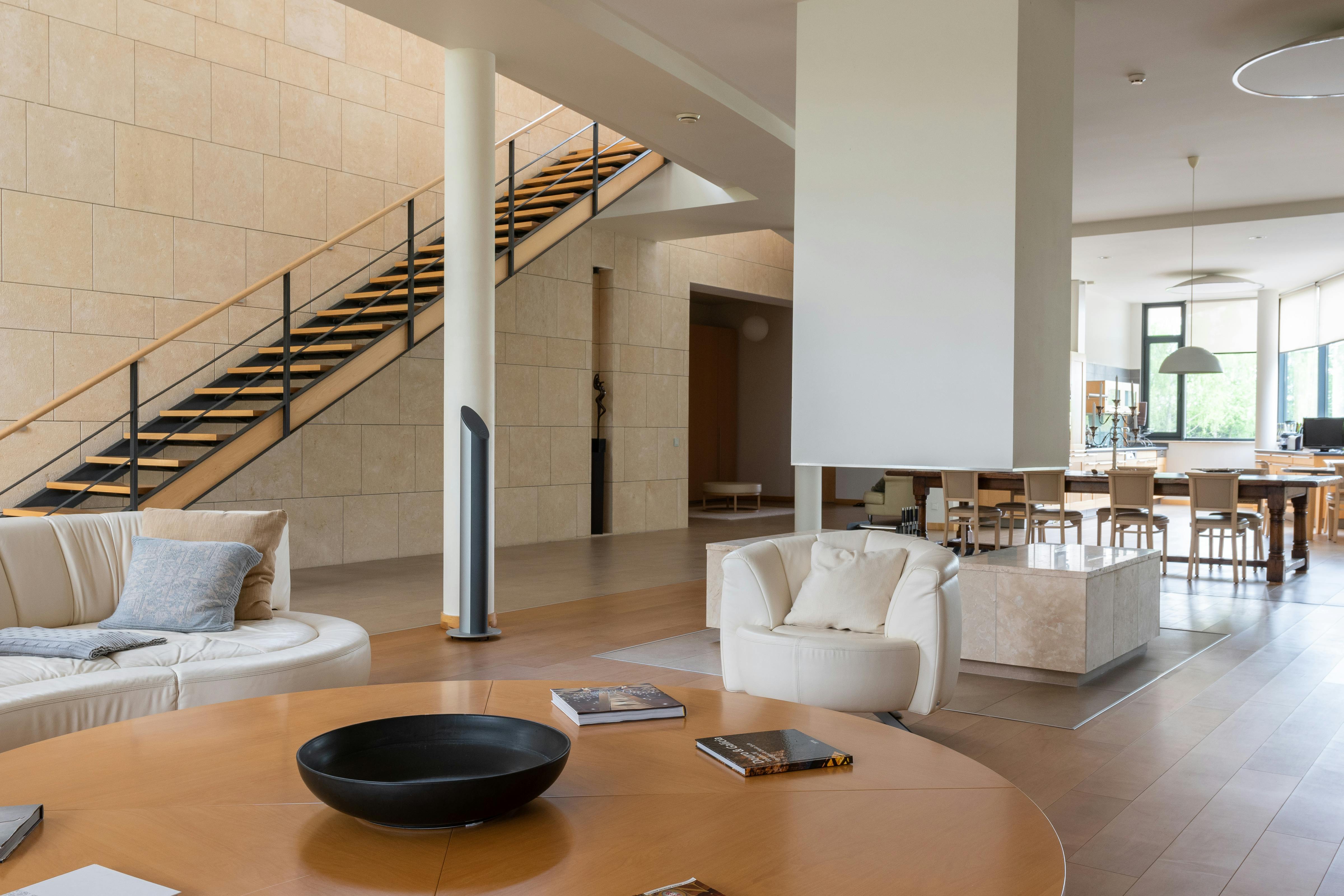sustaContemporary architecture faces the challenge of striking a balance between human needs and the preservation of the planet. In this context, sustainability and eco-design are no longer passing trends. Instead, they have become conceptual frameworks that redefine every stage of a project. As a result, this shift affects everything from the choice of materials to day-to-day operations. By doing so, by integrating clean energy, circular materials, and both passive and active efficiency techniques, it is now possible to create buildings that are healthier, more efficient, and aesthetically pleasing. Ultimately, these buildings not only minimise their ecological footprint, but also make a positive contribution to communities and ecosystems.

SOURCE: Pexels AUTHOR: Isabella Mendes
Renewable Energy: The Invisible Engineof theBuilding
Turning façades, rooftops and in-between spaces into productive surfaces isessential for surpassing conventional standards.Geothermal energy taps into the constant temperature of the ground through high-efficiency heat pumps. These systems achieve performance levels that far exceed those of fossil fuel technologies. In addition, aerothermal energy captures heat from the air using compact units. It can meet a significant portion of heating and cooling needs in temperate climates, while also providing long-term energy savings.
Photovoltaic and thermal solar panels are becoming lighter and semi-transparent. As a result, they can be seamlessly integrated into façades and glazing without compromising aesthetics. These systems power lighting, heating and cooling equipment, electric vehicle charging stations, and water pumps. Meanwhile, storage batteries help smooth out the energy generation curve and respond to demand peaks. Local microgrids, in turn, coordinate surplus energy between buildings, thereby reducing reliance on the conventional power grid.
In windy environments, small wind turbines integrated into overhangs or street lights complement the energy matrix with silent microgeneration. Similarly, residual biomass can be used in district heating systems to sustainably produce both heat and electricity.

SOURCE: Pexels AUTHOR: Kindel Media
Recycled and Bio-based Materials: The Beautyof a Circular Economy
The circular economy comes to life when recovered materials add character and history tospaces. Concrete made with recycled aggregates from controlled demolitions maintains its mechanical and thermal properties, closing the resource cycle and reducing the extraction o fvirgin materials. With on-site techniques, up to 90% of waste can be reused for new form work or prefabricated components. Reclaimed wood, sourced from beams in old buildings, retains its patina and structural strength, adding warmth to interiors. When combined with reinforced biocomposites, it creates lightweight panels ideal for cladding and secondary structures.
Biomaterials such as cork, hemp and linen offer excellent insulating properties, are renewable, biodegradable and free from harmful compounds. Bricks made from agricultural waste reduce the carbon footprint, whilepost-consumer plastics are transformed into durable cladding and furniture that can be recycled at the end of their life. Innovations such as ‘green’ steel, produced with carbon capture, or structures infused with activated carbon that filter the air, show that even metals can contribute to the circular economy.

SOURCE: Pexels AUTHOR: Matheus Bertelli
Energy Efficiency Techniques: PassiveandActive Comfort
The circular economy comes to life when recovered materials add character and history to spaces. For example, concrete made with recycled aggregates from controlled demolitions maintains its mechanical and thermal properties. In doing so, it closes the resource cycle and reduces the extraction of virgin materials. Moreover, with on-site techniques, up to 90% of waste can be reused for new formwork or prefabricated components.Reclaimed wood, sourced from beams in old buildings, retains its patina and structural strength. As a result, it adds warmth and identity to interiors. When combined with reinforced biocomposites, it creates lightweight panels. These are ideal for cladding and secondary structures.
Furthermore, biomaterials such as cork, hemp, and linen offer excellent insulating properties. They are renewable, biodegradable, and free from harmful compounds. Likewise, bricks made from agricultural waste help reduce the carbon footprint. At the same time, post-consumer plastics are transformed into durable cladding and furniture. These elements can be recycled again at the end of their life.Finally, innovations like “green” steel—produced through carbon capture—or structures infused with activated carbon that filter the air show promising potential. Even metals, therefore, can contribute to the circular economy.
Holistic Integration: Multifunctional Roofs,Façades andPavements
Harmony is maximised when solutions are designed together: roofs that integrate photovoltaics, solar thermal capture and native vegetation;dynamic façades with bimetallic blinds or movable panels; and ceramic pavements with geothermal loops functioning aslatent heat exchangers.BIM tools and automated energy auditsoptimise every decision from the conceptual phase, anticipating performance over decades.

SOURCE: Pexels AUTHOR: Sophie Otto
The Legacy of Responsible Architecture
Adopting sustainability and eco-design is an ethical and creative commitment to the environment and future generations. Integrating cleanenergy, circular materials and passive and active efficiency solutions transforms the architect into an alchemist of urban ecology, capable of creating spaces that breathe, produce and coexist in harmony with nature.Each project goes beyond its original purpose, becoming a constructive manifesto: a call to rethink habits, revalue resources and leave alasting legacy where aesthetics and responsibility merge into a single language. Sustainable architecture not only reduces consumption and emissions but also enhances quality of life, fostering more resilient and engaged communities.

